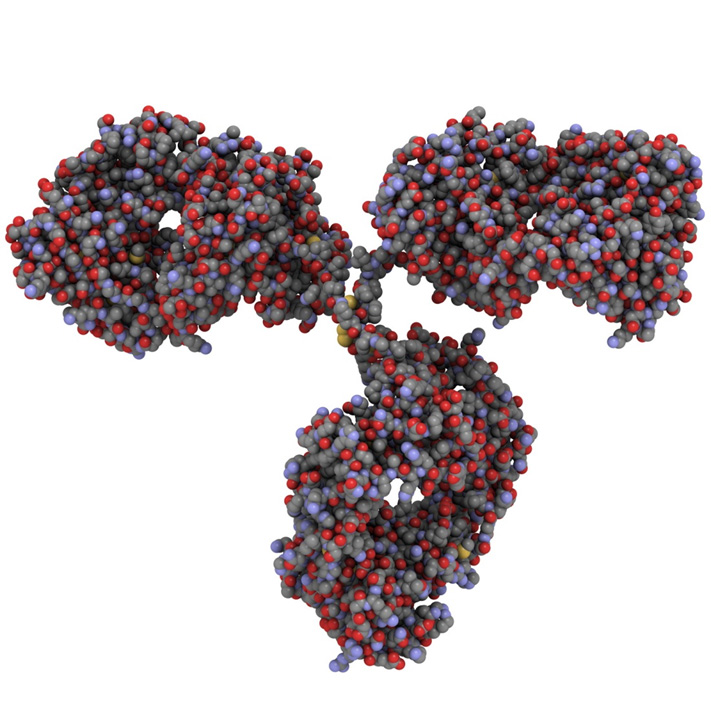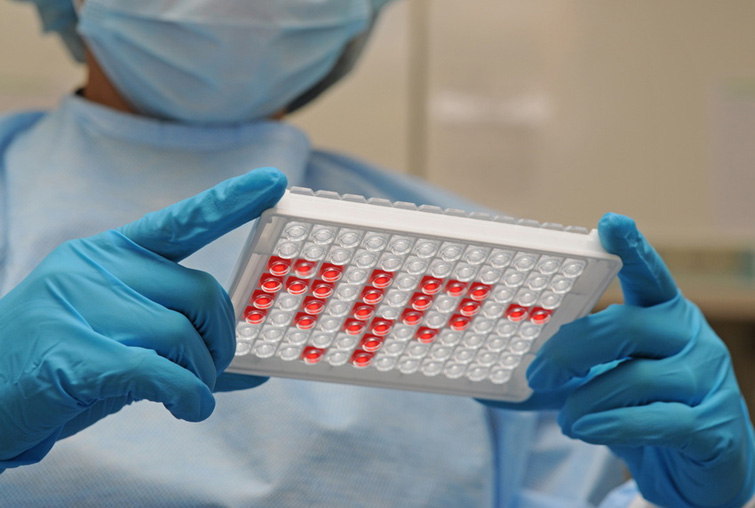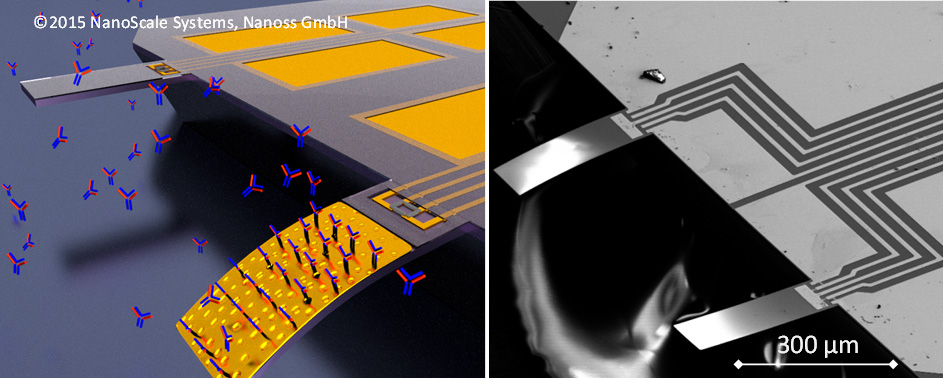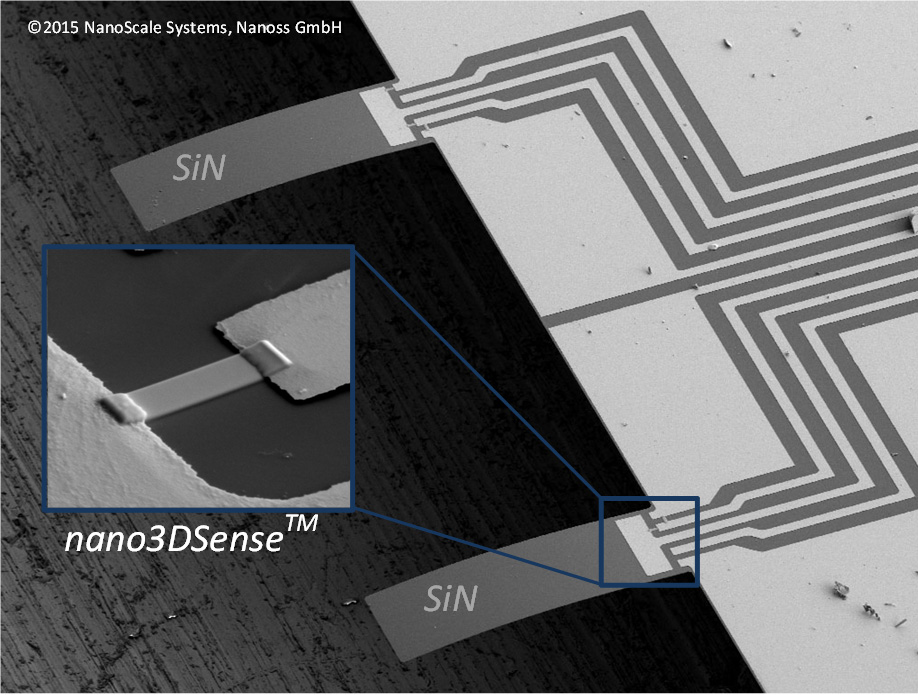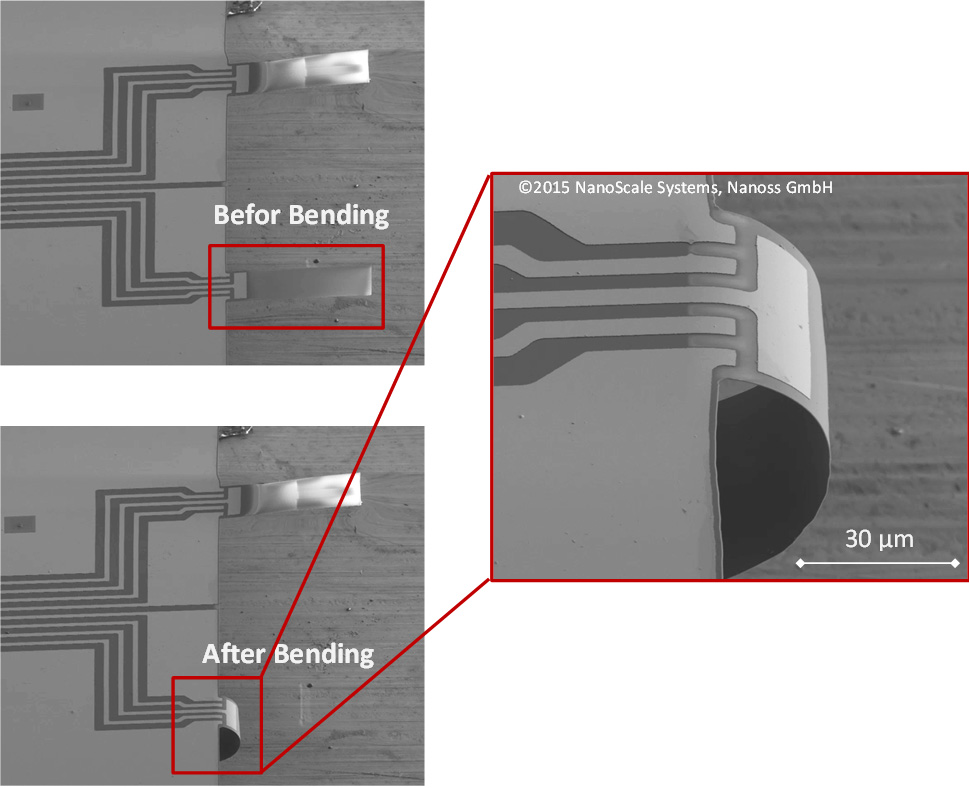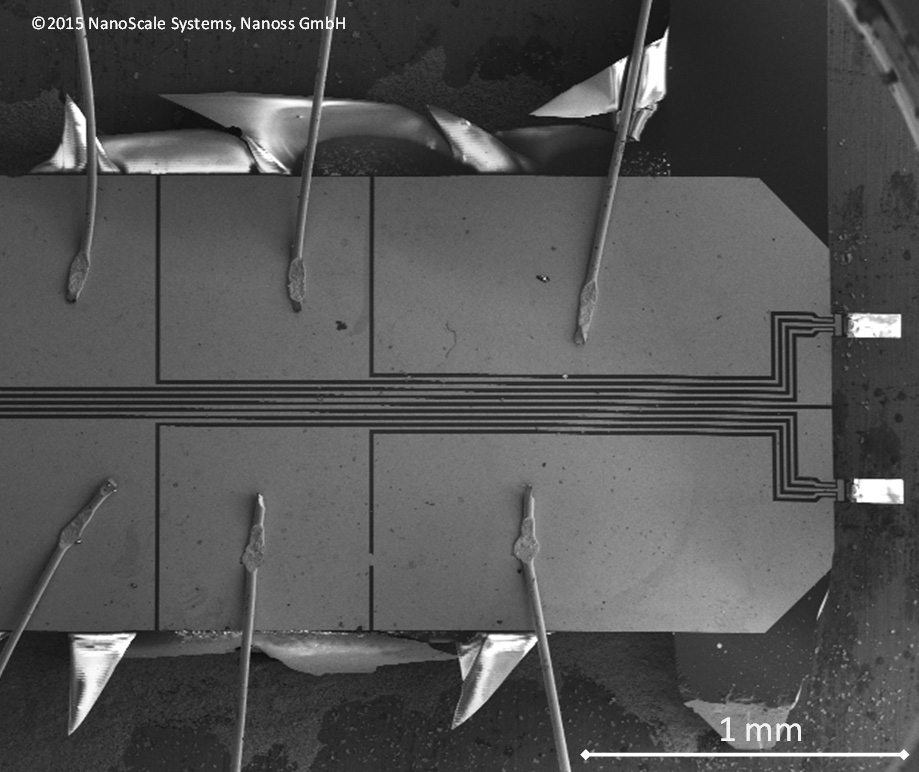Serious Disadvantages of Today’s Standard ELISA
The ELISA (Enzyme Linked Immunosorbent Assay) immunoassay has been the gold standard method for the diagnosis of disease-specific and other proteins or biomarkers for more than 4 decades. However as the method is a label-based test system that needs fluorescence or other markers, it is often associated with long waiting times and complex microscopic evaluations. In certain cases (e.g. emergency medicine or intensive care), these disadvantages can represent a serious problem for the quick therapy of the patients symptoms and recovery. At the same time, the labeling itself presents a high time and cost effort and burdens considerably high analyte requirements, e.g. blood samples and other resources.
Label-Free Immunoassays with nano3DSense Biosensors
Micro- and nano-fabricated cantilever biosensors (so-called MEMS/NEMS cantilevers) with nano3DSense use a completely new and advantageous way to detect antibodies and other proteins in the best possible way: label-free and ultra-fast.
The reliable lock-and-key principle ensures both significantly improved sensitivity and specificity with unrivaled results not achieved by today’s standard tests. Combined with very low analyte requirements in the order of only a few microliters per test the new nano3DSense based assay is the ideal platform for “Point of Care (POC)” diagnostics and analytics.
Advantage through Simplicity and Speed
nano3DSense offers decisive advantages for point of care diagnostic tests whether in medical care, industry or R&D: using multiplex arrays, a large number of analytes, such as antibodies, proteins, DNA or RNA can be simultaneously processed at high speed on a single microchip. With high throughput, cost-effective, and resource-efficiently.
Advantages of the nano3DSense diagnosis platform at a glance:
- Label-free analysis and immunoassays of bio molecules and micro-organisms, such as antibodies and antigens, disease biomarkers and other proteins, DNA and RNA, pathogens (virus, bacteria, spores and fungi) and cells, suitable for manifold “Point of Care (POC)” applications
- Real-time test results within minutes
- Unparalleled sensitivity and specificity through micromechanical and lock-and-key measurement principle
- Highly scalable setup through MEMS based multiplex arrays for high throughput on a single microchip
- Resource-saving test setup with low sample requirements (µl, microliters per test)
And Various Applications in “Point of Care (POC)” analytics and diagostics:
- Early diagnosis of diseases-specific biomarkers, e.g.:
- Type 2 Diabetes (e.g. Proinsulin, Glucose, Adiponectin, HbA1c)
- Cancer (e.g. PSA, AFP antigen, p53 antibody)
- Cardiovascular diseases, e.g. Acute Myocardial Infarction, AMI (e.g. Myoglobin, Troponin, Creatin Kinase and C-reactive Protein CRP) or Heart Failure (e.g. BNP (B-Typ Natriuretisches Peptid oder Brain Natriuretic Peptide))
- Molecular diagnostics:
- Hybridization analysis of ssDNA, RNA, aptamers and oligonucleotides
- DNA sequence matching and detection of Single Nucleotide Polymorphisms (SNPs)
- Rapid detection of multi-resistant bacteria („superbugs“) (MRSA, VRE, E. Coli)
- No time-consuming PCR-amplification (Polymerase Chain Reaction) or bacterial replication (petri dish) required
- Serology of infectious diseases (immunoassays for e.g. HIV, hepatitis, ebola, measles, rubella)
- Inline- and online bioprocess analysis in the industrial production lines of monoclonal antibodies (mAb) (upstream/downstream)
We closely collaborate with developers and manufacturers in the pharmaceutical and chemical industry to meet new challenges.
Please contact us: We are looking forward to inform you about all advantages of the new nano3DSense technology and the application possibilities in your specific area.
You can also request a demo and thoroughly test nano3DSense.
Read More:
What We Can Do for You
Tailored Customer Solutions in Medicine
Medical Sensors for Implants and Catheters
Point of Care (POC) Diagnostics
⇒Sensors for MEMS/NEMS
Ultra-Small Force Sensors
Rapid Prototyping

